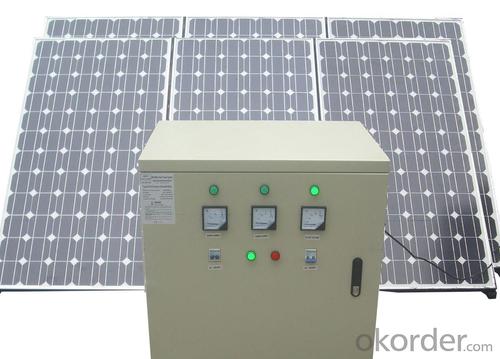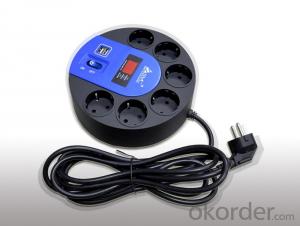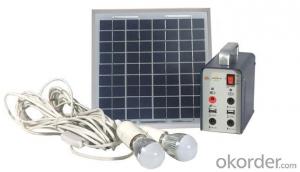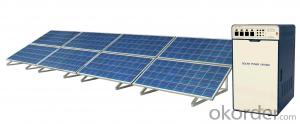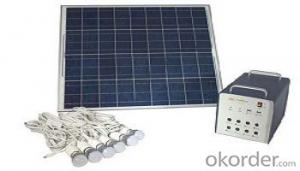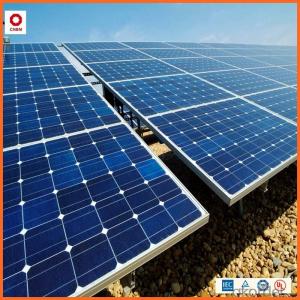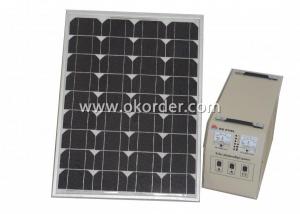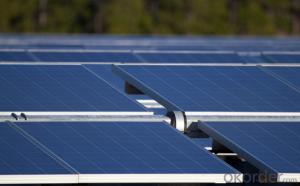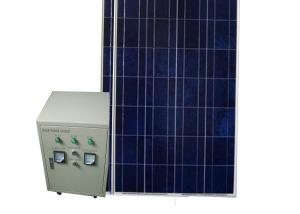CNBM Solar Home System CNBM-K6 (1KW) - Solar Energy Systems Perth
- Loading Port:
- China Main Port
- Payment Terms:
- TT or L/C
- Min Order Qty:
- 1 set set
- Supply Capability:
- 1000 sets per month set/month
OKorder Service Pledge
OKorder Financial Service
You Might Also Like
Brief Introduction of Solar Energy System CNBM-K6 (1KW)
CNBM Home System-K6 (1KW) has a wonderful capacity.It can be used in factory,home,school and other CNBM Home System-K6 (1KW) consist of the solar modules,charge controller,inverter and battery banks.
CNBM International is highly recognized by its business partners and clients all over the world and has obtained rapid development under the spirit of win-win .
With CNBM Home System-K6 (1KW),
We will carry on the mutual beneficial,innovative and revolutionary trading structure as we did before,create value for our employees,share holders and clients and benefit the whole society in our future development.Please contact us ,if you have interest in CNBM Home System-K6 (1KW),don’t hesitate!
The Sketching of Solar Energy System CNBM-K6 (1KW)
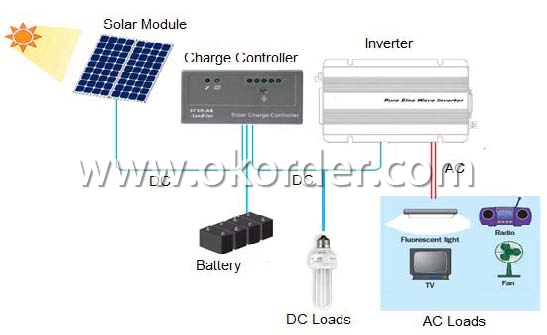
Components of Solar Energy System CNBM-K6 (1KW)
PV Array:
Convert sunlight instantly into DC electric power. Formed by the solar modules (also called photovoltaic modules) in accordance with the system requirements for series and parallel.
Solar Charge Controller:
A charge controller may be used to power DC equipment with solar panels. The charge controller provides a regulated DC output and stores excess energy in a battery as well as monitoring the battery voltage to prevent over charge or over discharge. An inverter can be connected to the output of a charge controller to drive AC loads.
Inverter:
Converts DC output power of photovaltaic soalr panels into standard AC power for use in the local off-grid electrical network. It is a critical component in a photovoltaic system, allowing the use of ordinary commercial appliances.
Battery banks:
Stores energy when there is an excess coming in and distribute it back out when there is a demand. Solar PV panels continue to re-charge batteries each day to maintain battery charge.
Technical data of Solar Home System CNBM-K6 (1KW) | ||
Inverter | Rated load power | 1500W |
Output wave | Pure sine wave | |
Output voltage | DC 24V | |
Output frequency |
AC:220V | |
Precision of output | 50HZ/60HZ | |
Precision of output frequency | ±6% | |
Solar panel | Pmax | 165W*6PCS |
Vmp | 36V | |
Imp | 4.58A*6 | |
Charger | Charger voltage & current | 24V /20A*3 |
Battery | Capacity | 12V 250AH*2PCS |
Power box | Spray paint iron box,with input,output,ammeter,voltmeter,master swith and so on. | |
Package of Solar Home System CNBM-K6 (1KW) | ||||
Part | Size(L*W*H mm) | Weight(kg) | 20’(pcs) | 40’(pcs) |
Power box | 800*540*780 | 70 | 48 Sets | 65 Sets |
Solar panel | 1600*830*90 | 90 | ||
Battery | 540*520*350 | 200 | ||
Factory Picture of Solar Energy System CNBM-K6 (1KW)
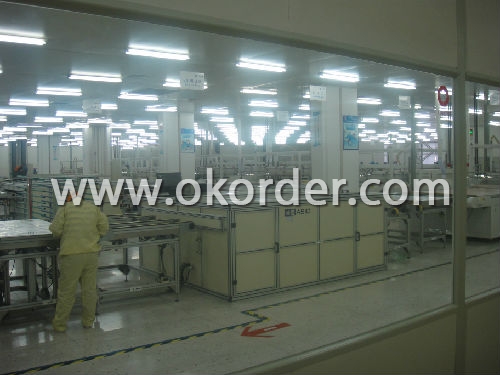
Package Picture of Solar Energy System CNBM-K6 (1KW)
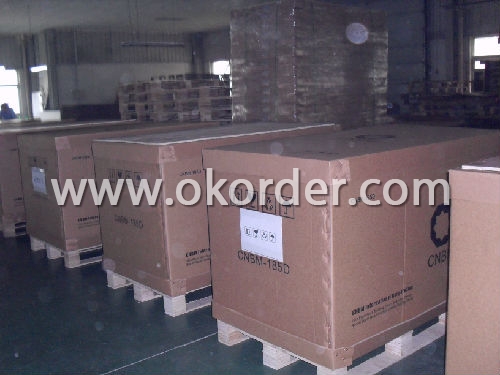
- Q: Can solar energy systems be used for powering sports stadiums?
- Yes, solar energy systems can definitely be used for powering sports stadiums. With their large open spaces and high electricity needs, sports stadiums are ideal candidates for solar installations. Solar panels can be installed on the stadium roof or in nearby open areas to capture sunlight and convert it into electricity. This renewable energy source can help stadiums reduce their reliance on traditional power grids, lower their carbon footprint, and potentially even generate excess energy that can be fed back into the grid.
- Q: Can solar energy systems be used for off-grid living?
- Yes, solar energy systems can be used for off-grid living. Off-grid living refers to living in a location that is not connected to the main electrical grid. Solar energy systems, such as solar panels and batteries, can generate and store electricity from the sun, providing a reliable and sustainable source of power for off-grid homes. This allows individuals and communities to be self-sufficient and independent from traditional energy sources.
- Q: Can solar energy systems be used in powering disaster relief centers or emergency shelters?
- Yes, solar energy systems can definitely be used in powering disaster relief centers or emergency shelters. In fact, solar power is increasingly being utilized in such situations due to its numerous benefits. One of the key advantages of solar energy systems is their ability to function independently of the grid. During natural disasters or emergencies, the conventional power grid may be disrupted or completely unavailable. In such situations, solar panels can generate electricity from sunlight, providing a reliable and sustainable source of power for essential operations in relief centers or shelters. Solar energy systems are also highly portable and modular, making them ideal for temporary installations. They can be quickly deployed and set up in disaster-stricken areas, providing immediate power for lighting, communication devices, medical equipment, and other critical needs. Additionally, solar energy systems can be easily expanded or modified to meet the increasing energy demands of relief centers or shelters as the situation evolves. Furthermore, solar power systems have minimal environmental impact compared to traditional fuel-based generators. They produce clean energy without releasing harmful pollutants or greenhouse gases, which is particularly important in disaster-stricken areas where air quality may already be compromised. Lastly, solar energy systems offer long-term cost savings. Once installed, solar panels require minimal maintenance and have a lifespan of 25-30 years. This reduces the reliance on expensive and often scarce fuel supplies, allowing relief centers and emergency shelters to allocate their resources more efficiently. In conclusion, solar energy systems are a reliable, sustainable, and cost-effective solution for powering disaster relief centers or emergency shelters. Their ability to function independently, portability, minimal environmental impact, and long-term cost savings make them an excellent choice for powering critical operations during times of crisis.
- Q: What is the role of energy management systems in a solar energy system?
- The role of energy management systems in a solar energy system is to optimize and control the flow of energy from the solar panels to various components of the system. These systems monitor and manage the production, storage, and usage of energy, ensuring that the solar energy generated is efficiently utilized and stored for later use. Energy management systems also enable monitoring and analysis of energy consumption patterns, allowing for better decision-making and resource allocation. Overall, these systems play a crucial role in maximizing the performance and effectiveness of a solar energy system.
- Q: Can solar energy systems be used in areas prone to earthquakes?
- Yes, solar energy systems can be used in areas prone to earthquakes. Solar panels are designed to withstand various weather conditions, including seismic activity. However, additional precautions may be required during the installation process to ensure the stability and safety of the system in earthquake-prone areas.
- Q: Can solar energy systems be used for powering hotels?
- Hotels can definitely use solar energy systems to power their operations. In fact, many hotels worldwide are already utilizing solar power to fulfill their energy requirements. Solar energy systems, such as PV panels or solar thermal systems, can be installed on hotel rooftops or surrounding land to capture the sun's power and convert it into electricity or heat. Solar power offers numerous advantages for hotels. Firstly, it is a clean and sustainable energy source, contributing to reduced carbon footprints and promoting sustainable practices. By utilizing solar energy, hotels can significantly decrease their dependence on fossil fuels and lower greenhouse gas emissions. Secondly, solar energy systems provide hotels with energy independence and reduce reliance on the grid. This is especially beneficial in remote areas or during power outages, as hotels can seamlessly continue operations with their own power supply. Additionally, surplus energy generated by solar panels can be stored in batteries for use during nights or cloudy days. Moreover, installing solar panels can be a wise financial decision for hotels. While initial installation costs may be high, solar energy systems have long lifespans and can result in substantial savings on electricity bills over time. In certain cases, hotels can even sell excess energy back to the grid, generating additional revenue. Lastly, solar power can enhance a hotel's reputation and attract environmentally-conscious guests. Many travelers actively seek eco-friendly accommodation options, and hotels utilizing solar energy can position themselves as sustainable and socially responsible. In conclusion, solar energy systems can certainly power hotels, offering clean, renewable, and cost-effective energy sources. They provide energy independence, financial benefits, and enhance a hotel's reputation. As the world moves towards a more sustainable future, solar power has become an increasingly popular choice for hotels seeking to minimize their environmental impact and efficiently meet their energy needs.
- Q: Can solar energy systems be used for powering electric vehicle wireless charging systems?
- Indeed, electric vehicle wireless charging systems can be powered by solar energy systems. These solar energy systems, such as solar panels, have the capability to capture sunlight and convert it into electricity. This electricity can then be utilized to power a wide range of devices and systems, including electric vehicle wireless charging systems. The process of utilizing solar panels to charge electric vehicles wirelessly involves the installation of these panels on either a building or a dedicated solar carport. Once the solar panels are in place, they are able to gather sunlight, which is subsequently transformed into electricity. This electricity can be stored in batteries or directly supplied to the charging system. The utilization of solar-powered wireless charging systems presents numerous advantages. Firstly, it provides a sustainable and renewable energy source, reducing the reliance on fossil fuels. Consequently, this contributes to the creation of a cleaner and more environmentally friendly atmosphere, as solar energy is a clean and emission-free power source. Secondly, solar-powered charging systems can be installed in remote areas where access to the power grid may be limited. This allows for the convenient charging of electric vehicles in locations that lack traditional infrastructure. Furthermore, solar energy systems have the potential to decrease the overall energy expenses associated with charging electric vehicles. By harnessing the power of the sun, electric vehicle owners can benefit from lower operational costs and even have the opportunity to earn money by selling any excess energy back to the grid. In conclusion, it is evident that solar energy systems can undoubtedly be utilized to power electric vehicle wireless charging systems. These systems offer a sustainable, renewable, and economically viable solution for charging electric vehicles, all while reducing the environmental impact and promoting energy independence.
- Q: Can solar energy systems be used during power outages?
- Yes, solar energy systems can be used during power outages. However, it depends on the type of solar energy system being used. Grid-tied solar systems without battery storage are designed to shut down during power outages to prevent electricity from being fed back into the grid and endangering utility workers. On the other hand, solar energy systems with battery storage, commonly known as solar-plus-storage systems, can provide electricity during power outages by utilizing the energy stored in the batteries.
- Q: Can solar energy systems be used in areas with high levels of dust or dirt?
- Yes, solar energy systems can be used in areas with high levels of dust or dirt. However, excessive accumulation of dust or dirt on solar panels can reduce their efficiency. Regular cleaning and maintenance of solar panels are essential to ensure optimal performance in such areas.
- Q: Can a solar energy system be installed on a ground-mounted structure?
- Yes, a solar energy system can be installed on a ground-mounted structure. Ground-mounted solar panel systems are a popular option for both residential and commercial installations, providing flexibility in terms of location and orientation to maximize solar energy generation. This type of installation is particularly beneficial in situations where roof space is limited or not suitable for solar panels.
Send your message to us
CNBM Solar Home System CNBM-K6 (1KW) - Solar Energy Systems Perth
- Loading Port:
- China Main Port
- Payment Terms:
- TT or L/C
- Min Order Qty:
- 1 set set
- Supply Capability:
- 1000 sets per month set/month
OKorder Service Pledge
OKorder Financial Service
Similar products
Hot products
Hot Searches
Related keywords



